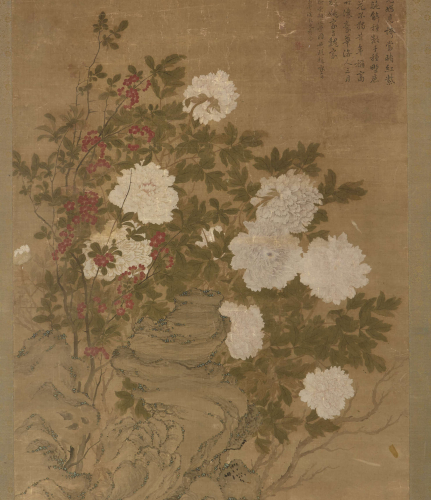Yun Shouping - also known as Nantian - was a master artist of the early Qing dynasty. Shouping was said to have mastered the “three perfections” - painting, poetry, and calligraphy - and is considered one of the “Six Masters” of his period. The other Masters were ‘The Four Wangs’ (Wang Shimin, Wang Jian, Wang Yuanqi, and Wang Hui) and Wu Li. Wang Hui was a huge inspiration to and a close friend of Yun Shouping. With the other Six Masters, Yun continued the traditional painting style as theorised by Dong Qichang. There was not considered to be a ‘leader’ among this pack of artists, who often used different methods and focused on the different subject matter in their work.
Yun was born in 1633 into a poor but well-connected family in Wujin in the coastal Jiangsu province of China. His early childhood was relatively fraught: the Ming dynasty collapsed when the artist was just 10 years old, and his father - a Ming loyalist - fled with Yun. During their flight, the pair were separated and Shouping ended up being adopted in a powerful Manchu family before being returned to his father in a Buddhist monastery. As a child, Yun would compose poetry on the petals of lotus blossoms and found much comfort in perfecting his artistic skills in a politically tense environment. He did well in his school studies and it was thought that he would enter the civil service, but this career was out of budget for the Yun family. Yun devoted the remainder of his life to his artistic pursuits, and in early adulthood made a living by selling landscapes.
Yun excelled at painting landscapes but, finding that his landscape paintings were second-best to his friend Wang Hui, decided to commit his focus to painting flowers and birds. This helped to separate his practice from that of the other five Masters. His paintings were guided by a desire for accurately capturing the image of the flowers he drew, but also reproducing their emotional essence. He is thought to have re-popularised the flower painting genre, and is celebrated for his ‘boneless’ (mogu) method of painting. The mogu method focuses on areas of colour washes rather than lines, and is known for depicting beautiful natural subjects and using vibrant colour palettes. Yun took inspiration from the 11th century artist Xu Chongsi - a master of the boneless method - and in turn, Yun’s daughter Yun Bing (who also became an artist) was inspired by her father’s mastery of the mogu method. Another influence on his style were the painters of the 13th and 14th Century Yuan dynasty. Yun was celebrated for his bold use of colours, and particularly his reclamation of the colours red and purple which had traditionally been seen as garish and ostentatious.
The artist gained respect from his contemporaries and was popular throughout China, and his successful reputation has continued long after his death. Yun’s style became known as the Ch'ang-chou School. Works by Yun Shouping are included in the collection of the Smithsonian, the Hong Kong Museum of Art, Taiwan’s National Palace Museum, and the Palace Museum in Beijing.
